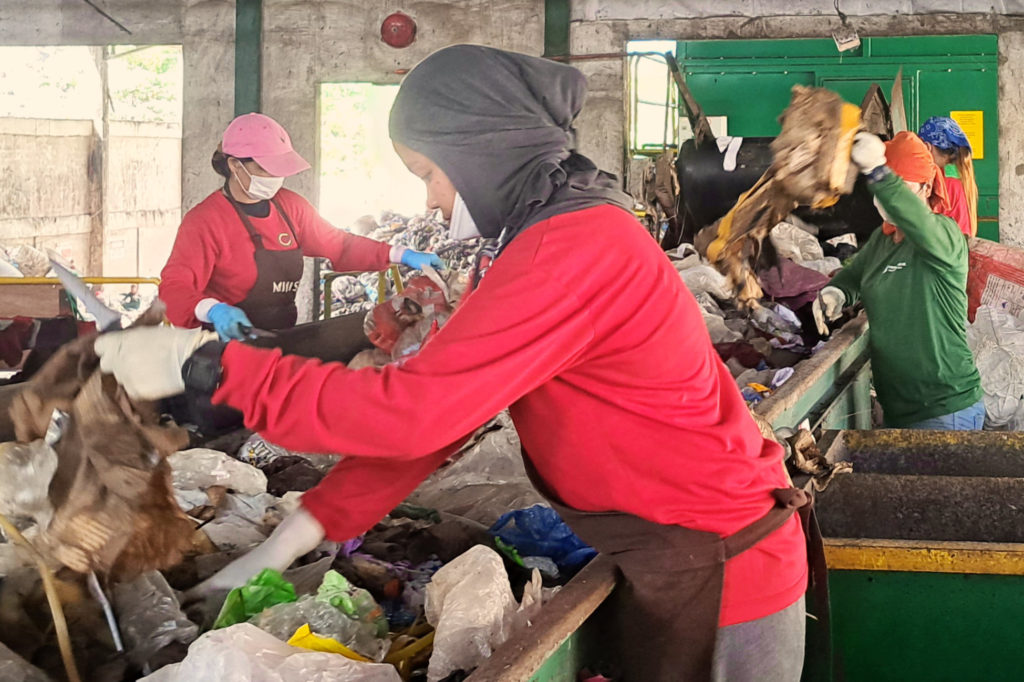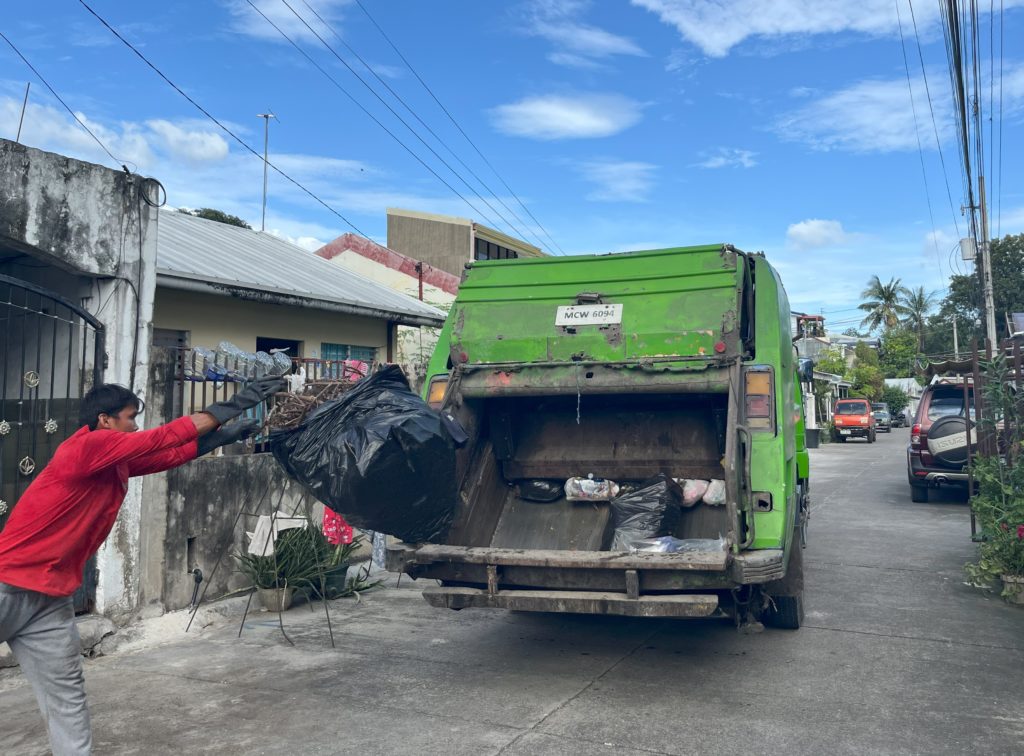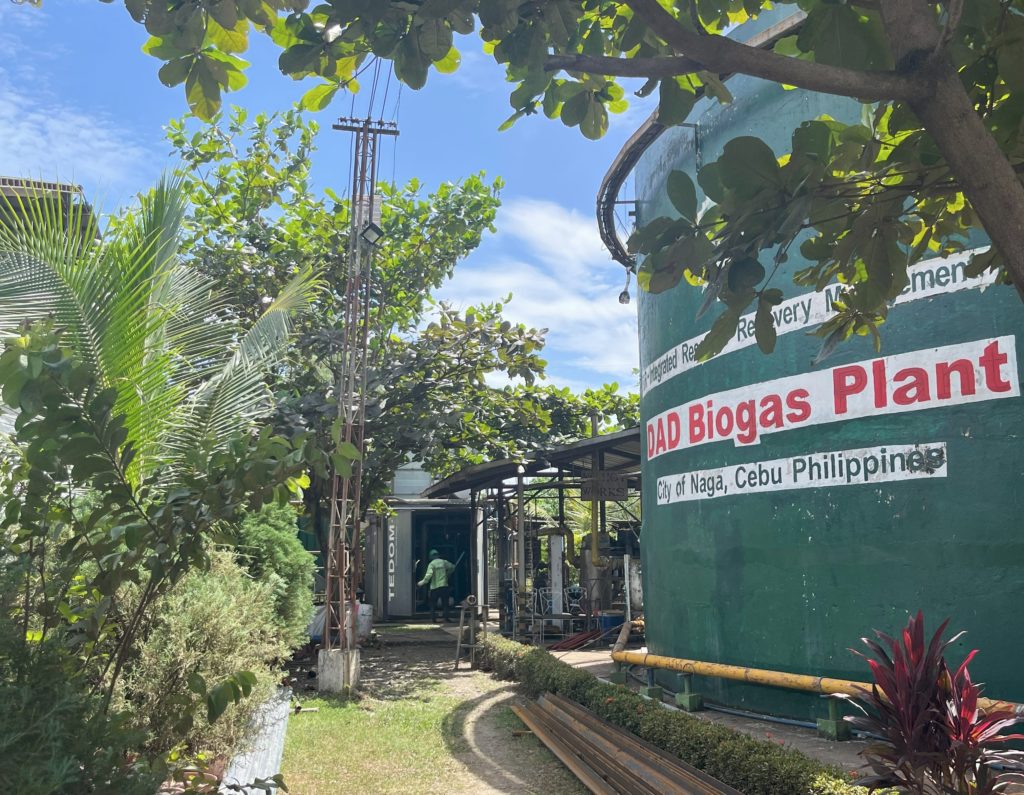Manila/Naga, Philippinen, April 2025: atmosfair signs cooperation agreements with two Philippine companies to convert organic waste into energy-rich biogas. Together with the companies REURASIA Management Corp. and FDR Integrated Resource Recovery Management Inc. (IRRMI), we want to generate renewable energy and reduce greenhouse gas emissions at the same time. atmosfair project manager Julia Beerhues and project developer Michael Zahradnik met with representatives of the two companies in the Philippines and took a look at their different technologies.

The company FDR IRRMI operates a solid waste treatment facility and biogas plant in the City of Naga on the island of Cebu. It currently processes 200 tons of municipal solid waste (MSW) or household waste per day and would now like to expand its capacity to 500 tons. atmosfair offers itself as a partner for the expansion of this plant, as the recycling of organic biomass is an important contribution to climate protection. “In the Philippines, waste is often disposed of improperly. And even if it is collected by the waste collection service, the waste usually rots uncontrollably in landfills. This way, it may release methane which is much more harmful to the climate than CO₂,” says Beerhues.
FDR IRRMI currently collects waste from households within a radius of 30 kilometers and takes it to the waste treatment facility. There, the mechanical sorting system extracts organic waste from the garbage, which decomposes into biogas in a sealed fermenter in a controlled process. FDR IRRMI then uses this gas as fuel to generate electricity to cover the energy requirements of the facility’s sorting system. Once the biogas plant has been expanded, it can produce 4.5 megawatts of electricity which will supply around 13,000 households. FDR IRRMI runs a fully integrated waste treatment facility where all components of municipal solid waste are addressed. It also contains a compost production line where by-products of the organic waste treatment are processed into nutrient-rich compost for agriculture and gardening use.

Transportable biogas plants in containers
Beerhues and Zahradnik looked at an alternative way of using organic waste as renewable energy with REURASIA in the Philippine capital Manila. The company installs and operates containerized biogas plants, which are designed to be relocatable. They can be transported to a different landfill site once operations at the current site are complete, if needed. atmosfair plans to work with REURASIA to initially build a pilot plant for this concept that will process up to four tons of organic waste per day. If this project is successful, atmosfair will build more of these plants. In addition, a container from Plastic Odyssee, which recycles plastic waste, can be placed next to the biogas plant, providing Philippine landfills with a comprehensive waste recycling plant.

Biogas as a national energy source
Waste disposal is a major problem for the archipelago in Southeast Asia. The population of the Philippines has grown by almost 40 million since the turn of the millennium and more and more people are living in cities. In the rapidly growing urban centers in particular, there is often inadequate infrastructure for removing and recycling waste. Also, more than half of the country’s electricity is generated using coal, which mainly comes from Indonesia. The Philippine government would like to reduce this dependence on fossil fuels from abroad. However, there is a lack of investment funds to produce and use biogas.
In a biogas plant, bacteria and fungi decompose organic waste in the absence of oxygen. This produces methane – an energy-rich gas that can be burned to generate electricity or for cooking, among other things. The residue from the biogas plant is suitable as fertilizer. If methane is produced during uncontrolled decomposition in landfill sites, it is released into the atmosphere. There it acts as a greenhouse gas 27 times more potent than carbon dioxide.


 Share
Share Tweet
Tweet